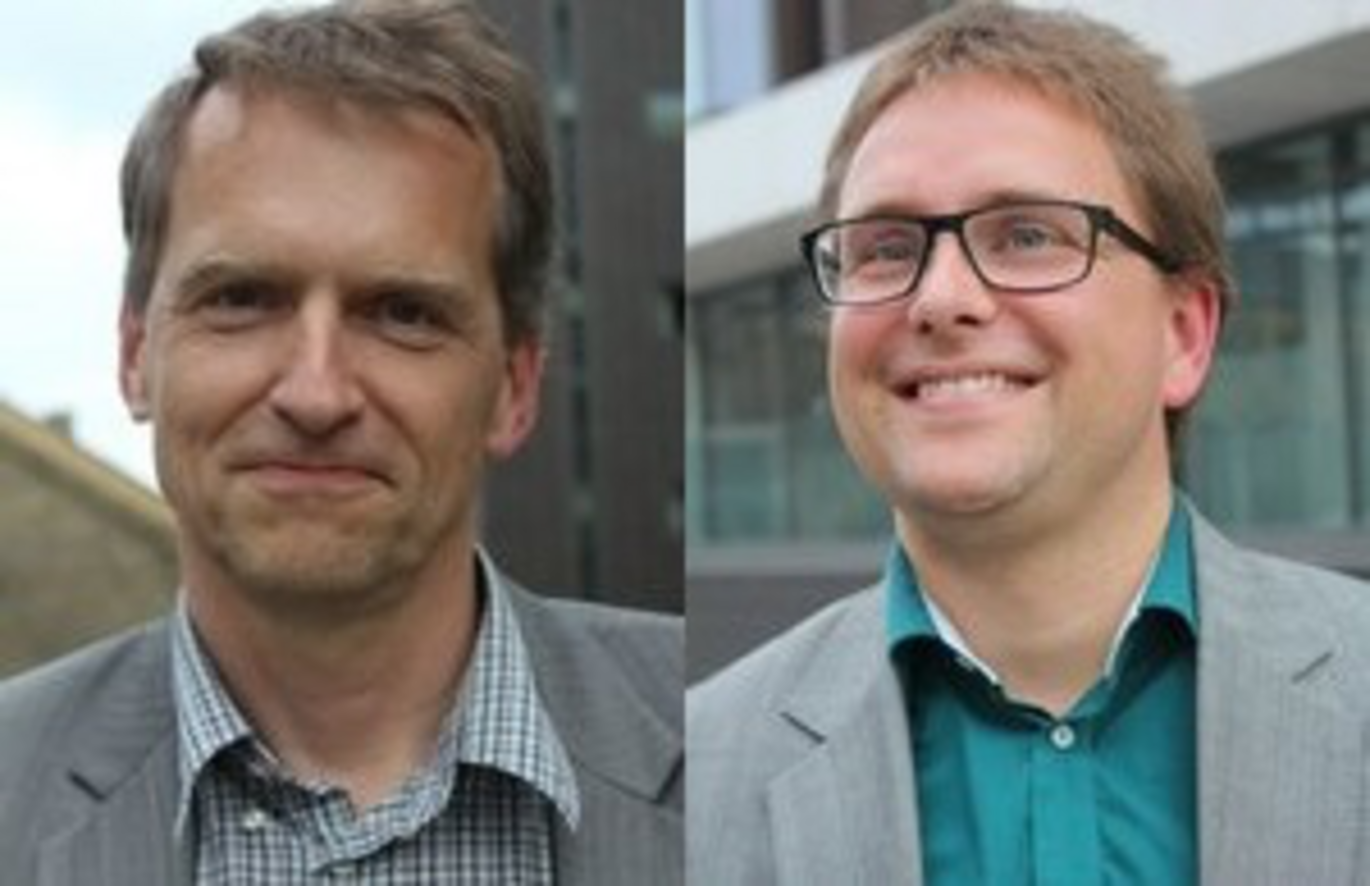ST awards 2016 Kim Daasbjerg & Mogens Christensen
Kim Daasbjerg & Mogens Christensen won ST Industrial Collaboration award & ST Science Award respectively

ST Industrial Collaboration Award 2016
The ST industrial Collaboration Award 2016 goes to Professor Kim Daasbjerg, iNANO and Department of Chemistry.
Kim Daasbjerg has been a role model for his colleagues as the prime mover in the establishment of new types of collaboration between AU and Danish industry.
Kim plays an active role in MADE (Manufacturing Academy of Science), consisting of Danish universities, whose goal is to ensure that new knowledge will be able to support the agile, innovative and sustainable production. A particular focus is to ensure polymer materials a prominent position in the future production image in Denmark. In connection with this, Kim has formed strong collaborations with a number of Danish companies including LEGO, Vestas, Grundfos, Velux, SP Group, Newtec, AVK Gummi and Alfa Laval.
Kim started the Brainnovation Day, a match-making event where ST academic groups are matched with relevant industry. The meeting serves as the first step to significantly increase dialogue and collaboration between the industry and AU.
Last but not least, Kim initiated a new paradigm for industry collaborations termed “open science concept”. The idea is that new knowledge is brought into play without legal binding and spread out where it can create value for Danish companies.
Congratulations to Professor Kim Daasbjerg with the ST Industrial Collaboration Award 2016.
ST Science Award 2016
The ST Science Award 2016 goes to Associate Professor Mogens Christensen, Department of Chemistry, based on his success in getting the HEIMDAL station approved at ESS – the European Spallation Source in Lund, Sweden.
Mogens is in the international forefront both in a chemistry field and in method development at large facilities at the age of 38, which is very remarkable. On top of this, Mogens is the central person in setting up an international team proposing a completely new design for neutron investigations of materials, which is absolutely outstanding and cannot be acknowledged too much.
The HEIMDAL instrument is unique, combining small angle scattering and powder diffraction in one instrument, combining cold and hot neutrons, while measuring in situ with the material under working conditions. This design is truly exceptional and has never been seen anywhere else in the world before. Mogens was crucial in first getting the idea of this unique combination, then central to assembling a great team of international scientist in the neutron diffraction from four European countries. His proposal submitted to the ESS board was selected to be among the first 16 instruments being funded.
Scientifically, 2015 has also been excellent for Mogens. He was appointed associate professor at the Department of Chemistry in 2014, which spurred his own independent research group in 2015. Mogens has similarly been successful in attracting external funding, and his Sapere Aude was beneficial for the group developing new magnetic materials. In 2015, he also successfully attracted a large grant from the Innovation Foundation on “Green Chemistry for Advanced Materials”. Over the past 2 years, he has published around 20 papers, including papers in Scientific Reports, Nature Methods, ACS Nano among other high impact journals.
Congratulations to Associate Professor Mogens Christensen with the ST Science Award 2016.
